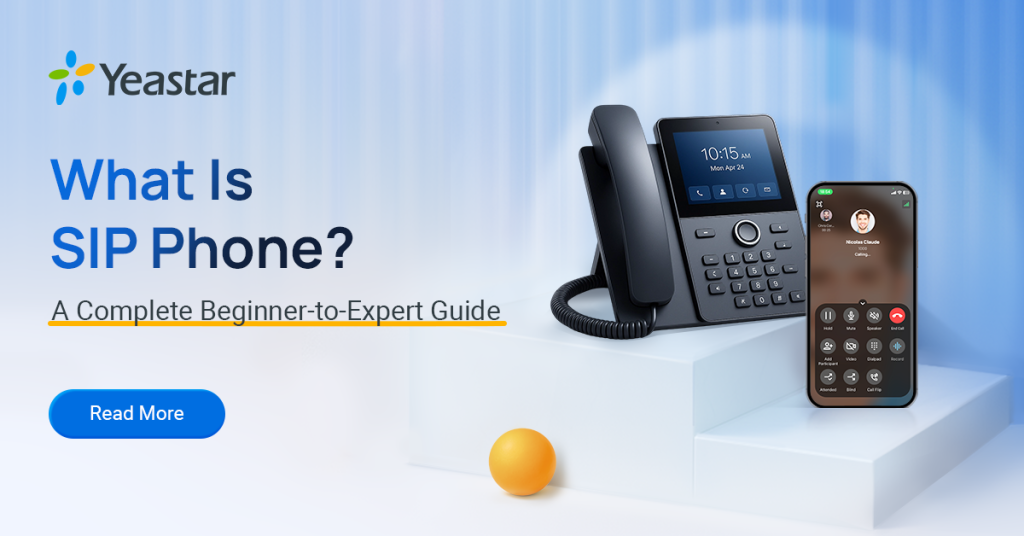Understanding SIP Phones: A Comprehensive Guide to Modern Communication

What Are SIP Phones and How Do They Work?
SIP Phones, short for Session Initiation Protocol Phones, are powerful communication devices designed for voice and video calls over an internet connection. Unlike traditional landlines that rely on the Public Switched Telephone Network (PSTN), SIP Phones transmit data using the internet or private IP networks. But how does this system work? At the core of SIP Phones is the Session Initiation Protocol, a signaling protocol that manages call setup, control, and termination.
To simplify, SIP acts like a shipping label for your phone calls, ensuring the right data (voice or video) reaches the correct recipient. Meanwhile, protocols like RTP (Real-Time Transport Protocol) handle the actual transfer of voice and video content. SIP’s open and standardized nature allows seamless integration across devices and manufacturers, making it an ideal choice for modern businesses and individuals alike.
The Mechanics of SIP Phones: A Deeper Look
The operation of SIP Phones can be broken down into simple, systematic steps. When powered on, the SIP Phone registers itself with a SIP server, sharing its unique phone number or extension alongside its current IP address. When you dial a number, the SIP Phone sends an INVITE request to the server, attaching the recipient’s details. The SIP server then routes the invitation to the recipient’s device. Once the call is accepted, protocols like RTP connect both devices to ensure the smooth exchange of audio and video data in real time. When either party ends the call, a BYE message is sent, terminating the session and clearing up network resources.
This process is efficient and reliable, enabling SIP Phones to support advanced features like HD voice quality, video conferencing, and mobile connectivity. As businesses increasingly prioritize seamless communication and scalability, SIP Phones have emerged as a go-to technology.
Different Types of SIP Phones
Although all SIP Phones rely on the same underlying protocol, they come in various forms tailored for specific needs and environments. The most common types include:
- Hardware SIP Phones: These physical desk phones resemble traditional office phones but connect to an IP network through Ethernet or Wi-Fi. They are a staple in corporate environments due to their reliability.
- Wireless SIP Phones: Combining the mobility of cordless handsets with SIP technology, wireless SIP Phones utilize DECT or Wi-Fi for communication. They are ideal for on-the-go professionals within facilities like hospitals or large offices.
- Softphones: These software-based SIP clients can be installed on PCs, laptops, or mobile devices. Popular choices include apps like Linphone or X-Lite. Perfect for remote workers, they allow calls from anywhere with internet access.
- Specialized SIP Devices: From video doorphones to intercom systems and conference phones, these devices integrate SIP functionality for seamless communication in unique scenarios like security or large-scale meetings.
Why Your Business Should Consider SIP Phones
SIP Phones offer a highly scalable, flexible, and feature-rich alternative to traditional landlines. They provide full control over call processing, unlike pure cloud solutions, and integrate seamlessly with modern business tools, making them ideal for organizations of all sizes. Whether you’re looking for HD voice clarity, video conferencing capabilities, or the ability to connect remote teams, SIP Phones deliver exceptional versatility.
For businesses just starting with SIP Phones, softphones can be a low-cost entry point requiring no additional hardware. As your business grows, you can expand into hardware solutions or specialized devices to meet evolving communication needs.
Simplify your organization’s communication with SIP Phones—modern, reliable, and built for the digital era. Explore solutions that combine advanced functionality with cost-effectiveness to elevate your connectivity today.



